Altima features fill 2013 generation gap
By John Gilbert
Nissan’s Altima, is attaining unprecedented success in the sixth and final year of its current styling generation. Model year 2013 signals time for the fifth generation Altima, however, offering a simple challenge: make the best-ever Altima better.
First drives of the 2013 Altima, from Nashville, which is near Nissan’s U.S. base in Smyrna, Tennessee, indicate Nissan connected on its objectives. Not that the current car is outdated. Nissan carved out an 8.2 percent market share in 2011, its best ever, and in the process became the No. 2 Asian brand in the U.S., behind only Toyota, but ahead of Honda, Mazda, Hyundai and the rest. With 75 percent of its U.S. sales coming from U.S. plants, Nissan became the top non-domestic manufacturer in the U.S.
The Altima was the standard-bearer for the company, and still is. Nissan proclaimed that this is the 20th anniversary of the first Altima, which came out in its first generation as a 1992 model, and with new generations in 1998, 2001, and 2007, over 3.8 million Altimas have been sold. After finishing second to the Camry among midsize U.S. sales in 2011, Altima recorded its best month ever in March of this year. When the new Altima reaches showrooms in July, it will start Nissan’s biggest launch ever.
In what promises to be a pivotal year for Nissan, and the auto industry’s burgeoning midsize class, Nissan has the benefit of having invested so much refinement in its primary corporate engines — the 2.5-liter 4-cylinder and the 3.5-liter V6 — that it is standing pat with those two offerings in the new car.
The company’s confidence in its two strong engines allows it to focus on high-tech features, aimed at giving Altima buyers the feeling the comfortable and stylish midsize sedan they’ve bought is a higher-class and more luxurious car than the sticker price indicates.
Those stickers cover the base car with the 2.5, and the base 3.5 V6-powered Altima, where both versions have easily discerned models. The 4 starts with the base model at $21,500, the 2.5S at $22,500, the 2.5 SV at $24,100, while the V6 models are the 3.5S at $25,360, 3.5SV at $27,780, or the 3.5SL, at $30,080.
The base 2.5 comes with a lot of standard equipment, including dynamic stability control and active understeer control — which imperceptibly brakes the inside front wheel in understeering situations, helping guide the car around the curve — plus keyless entry and start, Bluetooth with streaming audio, fine vision instrumentation, and six airbags. Move up to S and you add cruise control, 5-way power seats, auto-on and off headlights, and six speakers for the audio. The SV adds 17-inch alloy wheels, remote start, rearview monitor, dual zone air-heat with rear vents, and NissanConnect with XM satellite radio, hands-free texting, Pandora and iPod connectivity.
A Convenience package features 8-way power heated leather seats and Bose audio; Navigation package has heated steering wheel, navigation touchscreen, moonroof, and premium interior; and the Technology package has Google, blind-spot alert, and moving object detection. Those three packages are available with lesser models, and are part of the V6’s SL model upgrade.
Those are just some of the features available, and one of the most impressive is the inclusion of NASA-type bucket seats, which are designed to offer optimum support that is similar to what NASA has developed to eliminate fatigue and distribute muscular load more evenly for weightless travel.
The Altima isn’t weightless, of course, but it is 79 pounds lighter than the current model it replaces, thanks to liberal use of ultra high-strength steel and aluminum for strength and structural rigidity without extra weight. As for stylish travel, the Altima definitely looks the part. Lower and wider than its predecessor, the new Altima incorporates more of a curvaceous body, with its primary character line rising over the front wheel-well then tapering down before gradually sweeping back up toward the rear wheel-well, and topped by a passenger compartment set off by a steeply sloped windshield “A” pillar and a gently arching roofline that connects symmetrically with the body’s curves, ending with a semi-fastback roofline over the trunk.
The front has a much more dramatic style, with the grille slanting sharply inward to continue the curved angle that outlines the tops of the glassed-in headlight housings, then, below the bumper, it slants back outward toward the lower vent/foglight opening, which also seems to reflect the headlight housing. At a glance, the look is markedly similar to the sporty Lexus GS, which was introduced last November, meaning the Japanese rivals were well into their separate design stages, and if they came to similar results, even that works for Nissan’s intention of giving the Altima an upgraded aura.
If the look is eye-catching, and performance is strong, the consumer decisions may well come down to technical features, those neat little gadgets that are so user-friendly, which fill the Altima from bumper to bumper.
Among my favorite features:
- Tire pressure readouts tell you if a tire is low on air, but the dazzling part of it is when you’re putting air in, at a service station without anything resembling an air-pressure gauge, when you reach the proper pressure, the Altima horn chirps to let you know. And if you over-inflate, the horn honks harder and the flasher flash.
- Along with keyless entry and start, the key fob has a remote-start switch that works from 195 feet away, so the car and its climate control can be warm or cool, depending on how you preset it.
- With navigation, driver assists, Bluetooth, and Pandora for music, all reading out on a 7-inch screen, NissanConnect also offers a hands-free texting capability. Texting while driving is a serious problem because of the attention it diverts, but with the Altima, your text message comes to you, and you can have it read to you with one touch, and you can reply with a pre-programmed response that you can install, suggesting, for example, that you are busy driving and will respond soon.
- Nissan always has been a leader in rear-view camera operation, and the new Altima adds blind-spot alert, moving-object detection, and lane-departure warning and assist. The voice command also can fetch traffic slowdown news, and if you seek the weather forecast, it asks whether you want it for where you are, or where you are going.
- Driving in the rain is made easier in a couple of ways. When the wipers are turned on, after four swipes, your headlights come on automatically. And when the rear-view camera detects dirt on the lens, a tiny washer hits it with a tiny squirt of water, and then blows it dry to assure a clear view. We will await a trial in Minnesota winters to be certain it works at 20 below.
Any and all of the camera-based devices can be turned off if the driver finds them annoying.
We had the chance to briefly test-drive both the 4 and V6 Altimas, and both performed admirably as my driving partner and I swapped turns behind the wheel and cruised on highways and over some rolling hills in the Tennessee countryside. So secure is Nissan with those two engines that it ignored the current trend of major adversaries, offering only advanced 4-cylinder engines in the new Chevrolet Malibu, upcoming Ford Fusion, and apparently the Honda Accord — all following the lead of the hugely successful 2011 Hyundai Sonata in quest of adequate power and mid-30 mpg fuel economy.
Rural Tennessee residents might have wondered about all the large “38” signs placed around the countryside, but they were just route-indicators to keep reminding the assembled media that Nissan is trumpeting the potential of the new Altima for hitting 38 mpg. That means the 2.5-liter 4-cylinder, which projects to comprise 90 percent of sales, and which carries an EPA estimate of 38 mpg. Nissan claims that 38 places the Altima above the 35 EPA highway estimate of the base Sonata and Camry, the 34 of the Accord, 31 of the Volkswagen Passat, and even the 37 mpg of the optional and higher-priced special economy models of the Fusion and Malibu.
Still, Nissan officials stress, there remains “significant demand” for the V6 power, which offers more power and also what Nissan calls the “luxurious feeling of our V6” compared to competitors downsized 4-cylinders, even those with turbochargers. There is no question about power; the 4 has 182 horsepower at 6,000 RPMs and 180 foot-pounds of torque at 4,000; the V6 270 horsepower at 6,000 RPMs and 258 foot-pounds at 4,400 revs. The 4 shows EPA estimates of 38 highway and 27 city, and the V6 EPA numbers are 22 city/31 highway. Personally, I like to observe mileage on my own real-world driving, and while it was only over a hundred miles on routine highway driving through rural Tennessee, my partner achieved 36.0 mpg, and I got 35.7. with the Altima 4, and in the V6, we got 24.5 on the highway.
Auto writers tend to drive harder than normal consumers, but on one weekly test, driving 165 miles on a Minnesota freeway with the cruise control at 75, we got 41.5 mpg in a Sonata Limited. And on the same freeway in a Kia Optima with Hyundai’s 2.0 turbo, we got 35 mpg.
There is one other point of contention. While some manufacturers have reported an increase in manual transmissions from a more fuel-economy-motivated public, and many car-makers have chosen to go with more gears in their automatic transmissions while abandoning continuously-variable transmissions and their droning lack of sportiness, Nissan has steadfastly developed and improved its CVT to the point of making it the standard transmission in all new Altima models. By redesigning 70 percent of the CVT controlling parts and reducing internal friction 40 percent, the new unit is more direct, and on the V6 models, simulated shift-points are designed into it, which can be controlled by shift-column-mounted paddles.
The 4 gets no such paddles, however, nor even a manual override on the shift lever, although the drone is far less obtrusive. I have a friend who bought a current generation Altima several years ago, and he boasts about the sportiness of the 4-cylinder with a manual transmission. Not sure how he’s going to accept the new one. Nissan claims the new Altima’s 7.1-second burst from 0-60 makes it the fastest midsize car, although the fine print says that’s among 4-cylinder cars with automatic transmissions. The Sonata, Mazda6, and Camry, among others with stick shifts available with their 4s, might want a drag race for boasting rights.
The Altima’s handling is smooth and precise, with quickened steering, and a revised suspension that was developed after benchmarking the front-wheel-drive Altima’s handling in comparison to the BMW 3-Series, Audi A4, and Mercedes C-Class — all German icons.
Speaking of the Altima’s heritage, Nissan officials can be excused for being a little confused by its own history. This is the 20th anniversary of the Altima, we all agree, but nothing was mentioned about the late and lamented Stanza, the car that actually started the midsize segment. It began life in 1982 and lasted until Nissan’s thorough redesign for 1992 was named Altima, and built in a new plant in Smyrna, Tennessee. The Stanza itself grew from the Violet, which was sold in Japan from 1973 until being reincarnated as the Stanza. The name Nissan itself was forced upon an unwilling, and unwitting, U.S. populace to replace the popular name Datsun.
And we haven’t even gotten to Infiniti, Nissan’s upscale arm. But Nissan is busy enough, with the 2013 Altima the first of what will be five new vehicles launched in the next 15 months. A new Pathfinder comes next, this fall, followed by a new Sentra compact, then an all-new high-volume hatchback and a high-volume small crossover. We don’t know if Nissan plans to add those last two as all-new models, or just intends to use its selective recall and change the names of vehicles such as the Juke and the Rogue.
Comments
Tell me what you're thinking...
and oh, if you want a pic to show with your comment, go get a gravatar!


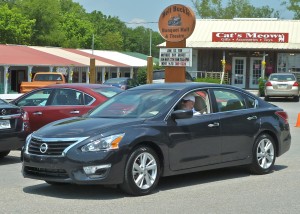
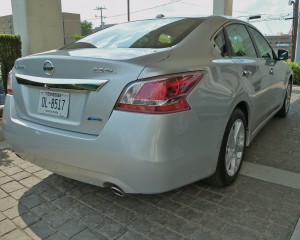
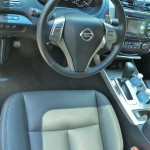
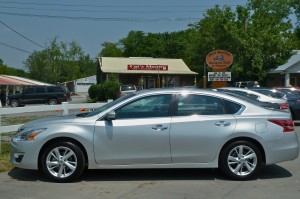
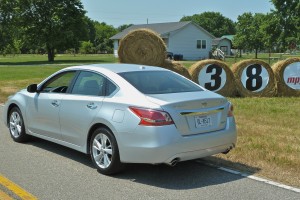
 John Gilbert is a lifetime Minnesotan and career journalist, specializing in cars and sports during and since spending 30 years at the Minneapolis Tribune, now the Star Tribune. More recently, he has continued translating the high-tech world of autos and sharing his passionate insights as a freelance writer/photographer/broadcaster. A member of the prestigious North American Car and Truck of the Year jury since 1993. John can be heard Monday-Friday from 9-11am on 610 KDAL(www.kdal610.com) on the "John Gilbert Show," and writes a column in the Duluth Reader.
John Gilbert is a lifetime Minnesotan and career journalist, specializing in cars and sports during and since spending 30 years at the Minneapolis Tribune, now the Star Tribune. More recently, he has continued translating the high-tech world of autos and sharing his passionate insights as a freelance writer/photographer/broadcaster. A member of the prestigious North American Car and Truck of the Year jury since 1993. John can be heard Monday-Friday from 9-11am on 610 KDAL(www.kdal610.com) on the "John Gilbert Show," and writes a column in the Duluth Reader.